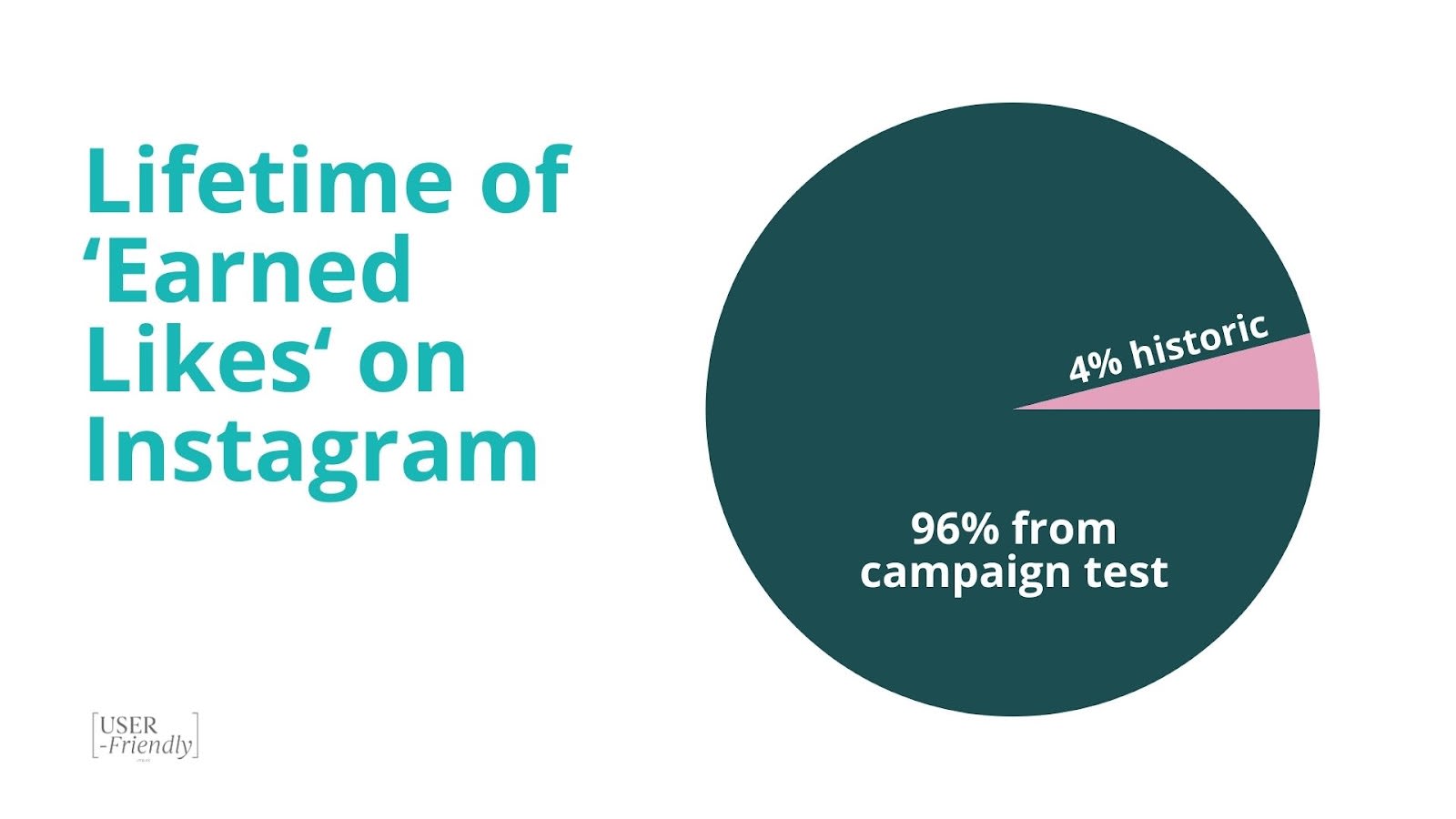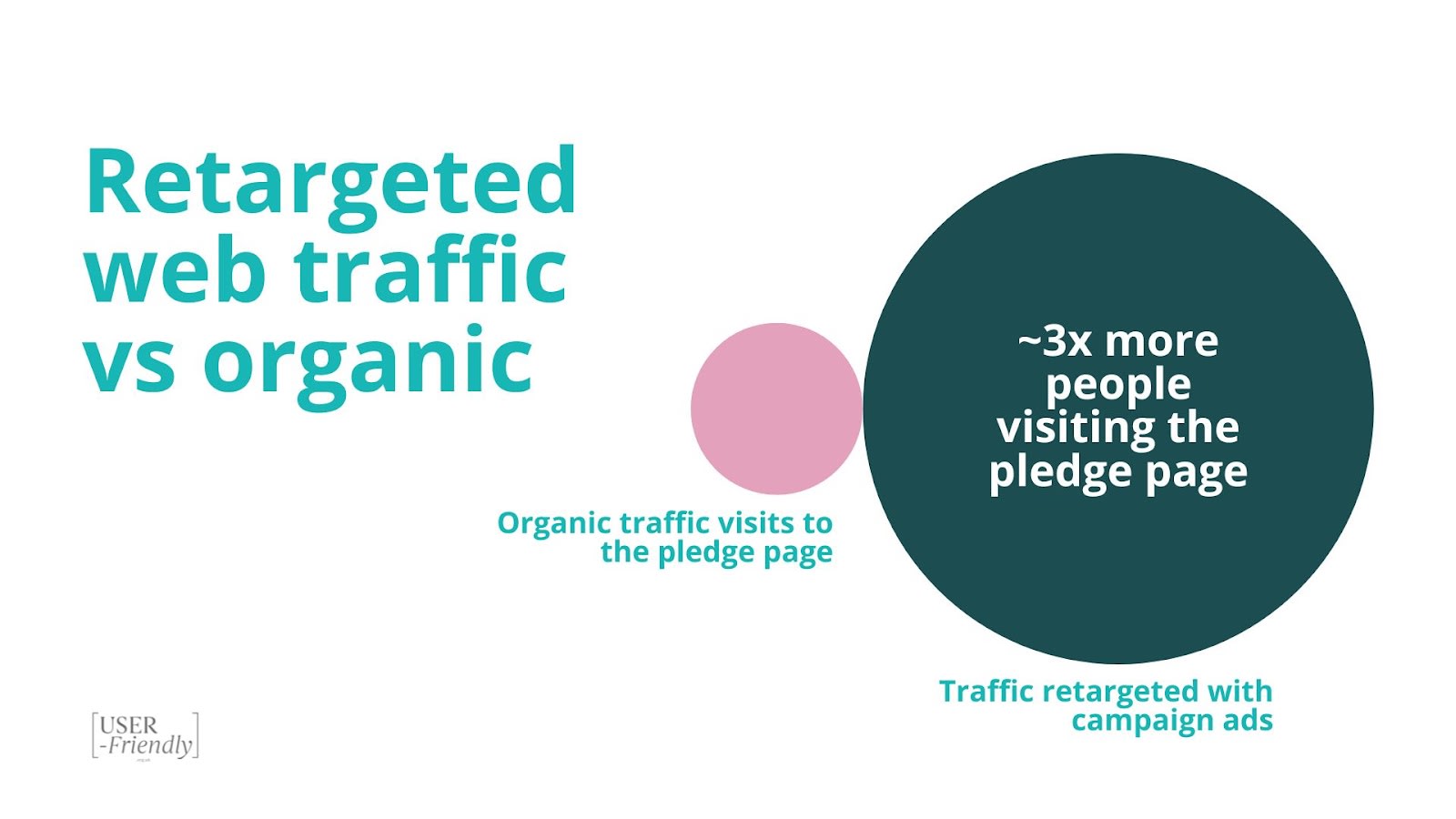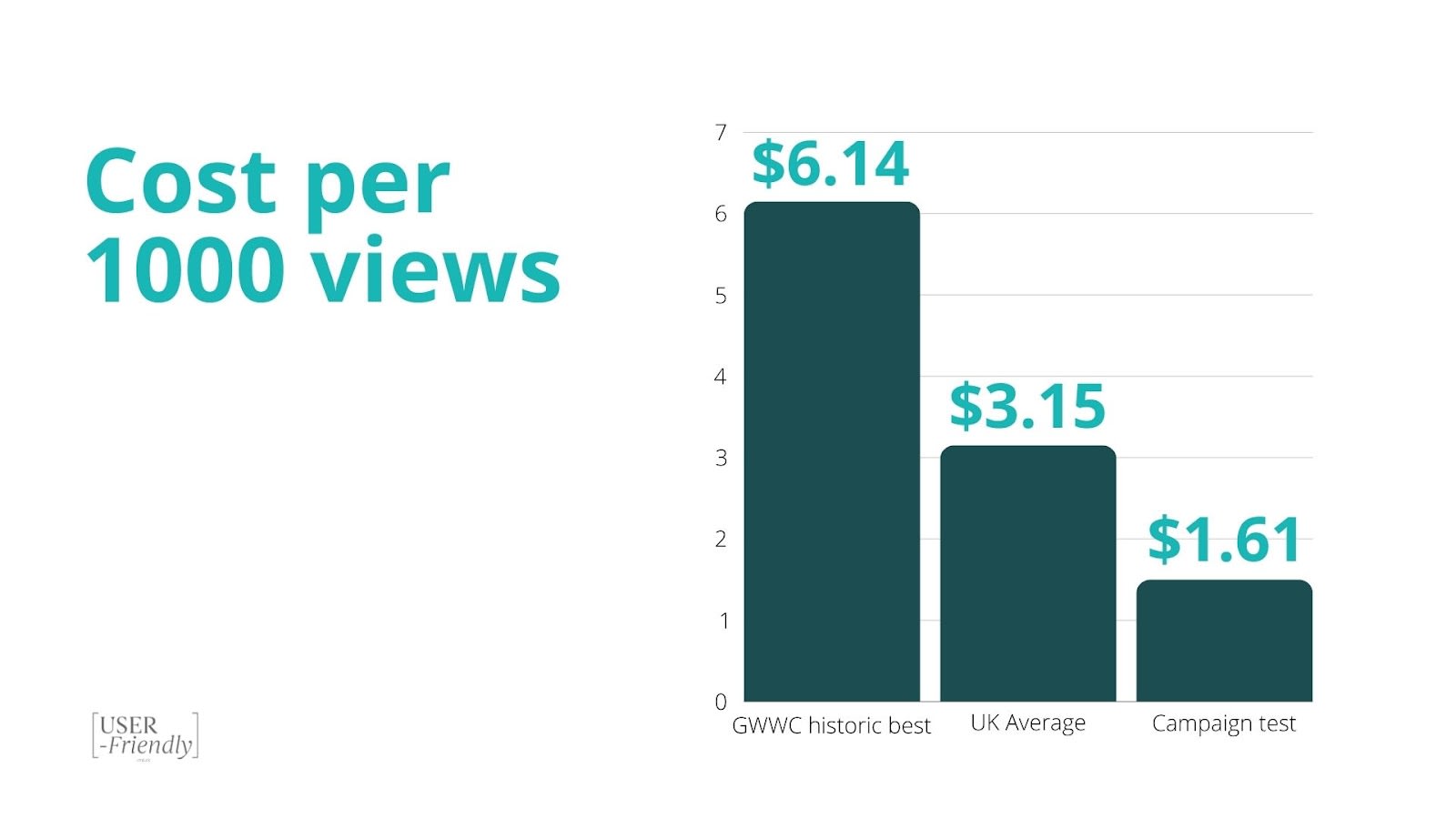We recently ran a test to see if utilising creative marketing practices could increase the performance of a brand-led digital campaign - and it did.
We are sharing the results to encourage other organisations to consider the quality of their output in areas where this could directly impact engagement, potentially resulting in increased donations and or pledge sign ups in the long-term.
We partnered with Giving What We Can and produced a brand awareness video to test the power of creativity - the results prove the worth in investing time in the creative quality of movement marketing overall.
Grace Adams, Head of Marketing at GWWC: “We are really happy with the performance of this campaign, and it’s given us more confidence to undertake more creative approaches with future campaigns. We’re excited to see how the increased awareness will translate into results further down the line.”
Creative marketing practice refers to content production that employs innovative and imaginative approaches to capture the attention of the target audience and evoke emotional responses, effectively conveying the core message. The aim here was to test a more creative approach comparatively to the existing content across their social media.
The quality of the creative concept in an ad is one of the biggest drivers to impact (see Kantar research here), and the results from this campaign indicate that we could see great returns by swapping out low fidelity, simply informative, ration-led content for more distinctive and emotive content.
The Campaign
| Objective | Increase Giving What We Can brand awareness over Giving Season |
| Target | Educated, top 50% earners, median ~30, working professionals with interest in relevant philanthropic topics e.g. climate breakdown |
| The Ad | You can see a version of the ad here. |
| Ad Spend | $4,899.58 on YouTube & $7,172.41 on Instagram |
| Duration | ~8 weeks |
| Channels | Videos for Instagram and YouTube. We also created related display ads to direct web traffic back to the GWWC pledge |
| Overall Metrics | Reach: 4,554,692 Total Impressions: 7,923,623 CPM: $1.61 Views: 5,357,063 Engagements: 931,100 CPE: US$0.01 Web Traffic: 24,914 new users Pledge Page Visits: 465 From retargeting: 1111 users visited the website for 4 mins or more & 469 users visited for 10 mins or more |
The Headliners
48x more views on Reels, Stories and Feed, than any previous campaign on Instagram.
Attributed Instagram profile visits were 249% higher than any other previous campaign.
Referrals from Instagram to the GWWC website are typically extremely low (<100 per month) however we produced a throughflow of
- 1622 users referred from Instagram visited 4 mins or more
- 429 users referred from Instagram visited 10 mins or more
96% of the earned likes* from the GWWC account lifetime originated from this campaign. This not only signifies the quality of the audience we targeted—individuals new to the content—but also highlights their engagement with the broader content ecosystem of the brand.

Retargeting web traffic with campaign-branded ads produced almost 3x more people visiting the pledge page compared to organic traffic visits to the pledge page, despite organic traffic representing twice as many new users overall
Reached over 4.5m people in the UK with an average CPM (cost per 1000 impressions) of $1.61. This is 2.5 times lower than the average CPM for UK video campaigns, especially for YouTube and Instagram. And substantially lower than Giving What We Can’s previous CPM average of $6.14.
To Consider
- Organisations are not fully utilising creative marketing practices meaning that for every dollar you spend on your marketing and communications (having not considered a more creative approach), you are leaving impact on the table.
- Organisations under-prioritise long-term marketing even though it could have huge implications for awareness, funding and overall impact in the long-term but also significant results in the very short-term. In just 8 weeks, we’ve produced a substantial brand lift for GWWC and spread their campaign more widely than any previous campaign or drip feeding content.
- Organisations dedicate little to no time or resources to top-of-funnel, brand awareness building activity. This means that we are always asking something of our audience (short-term marketing) rather than working on them getting to know us first, increasing the likelihood of a bigger yes later down the line. (See, Freeman and Fraser 1966)
Interested in a test?
We are looking to partner with public-facing organisations to develop creative concepts that support your organisation's goals e.g. increase web traffic.
We will develop the concept and create the collateral, dispersing the assets, tailored for each individual collaboration.
We will focus on either; brand awareness, pledges (if you have them) and or direct donations depending on your goals.
The goals for the collaboration are;
- A clear and measurable increase in exposure
- Statistics as performance indicators e.g. social media impressions, click throughs from ads, etc.
- Increased exposure with minimal resource cost to your organisation
- Increased sense of what can be achieved with quality creative marketing campaigns





